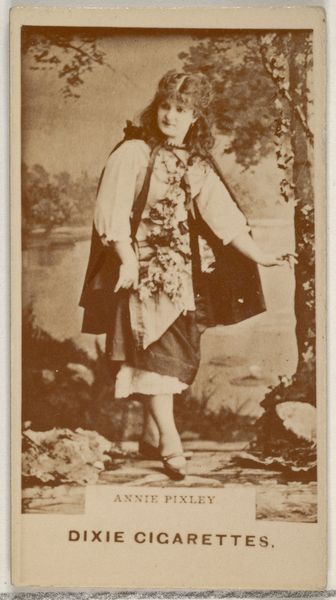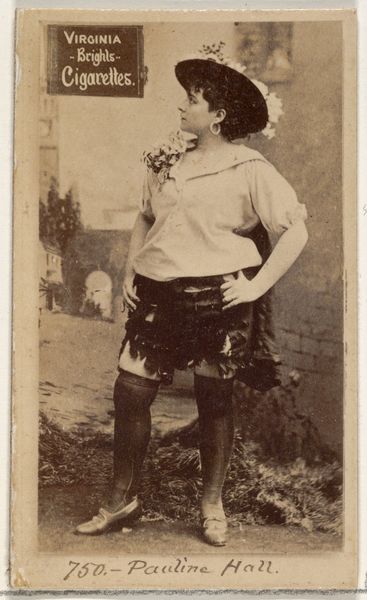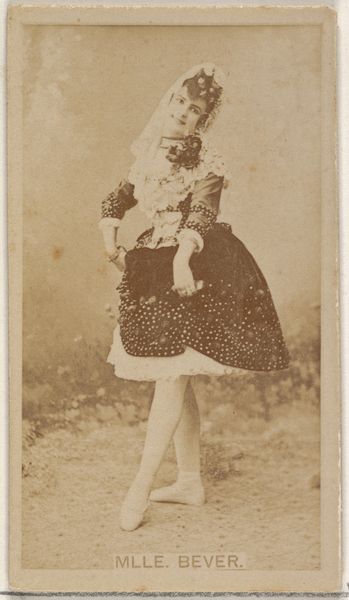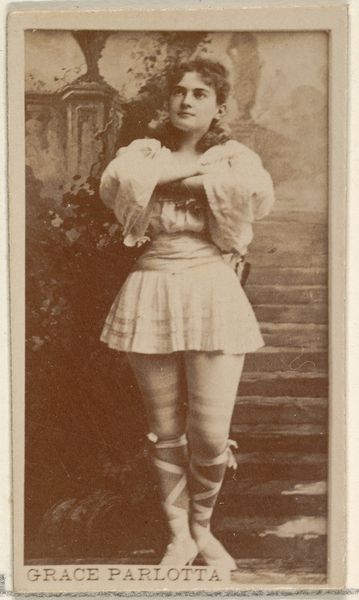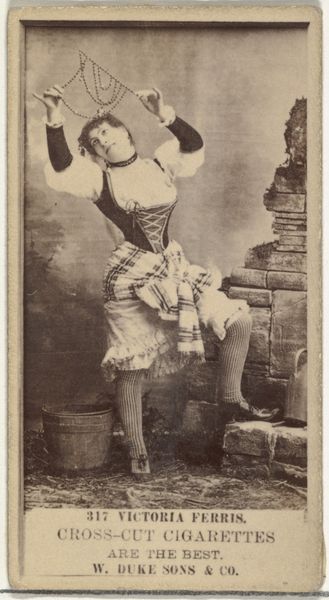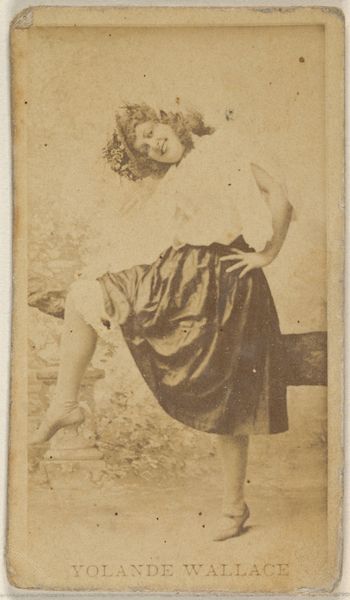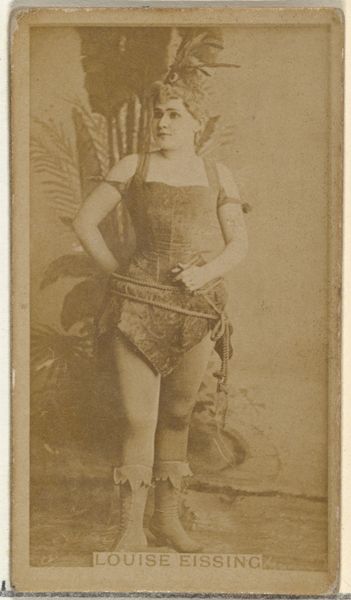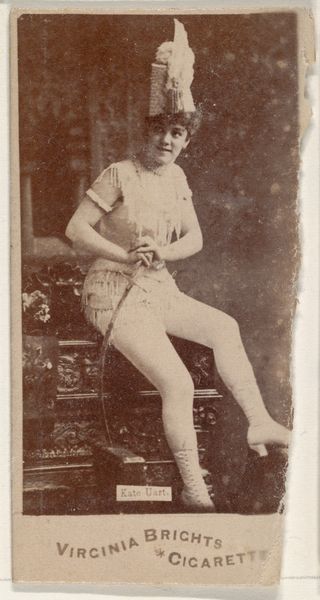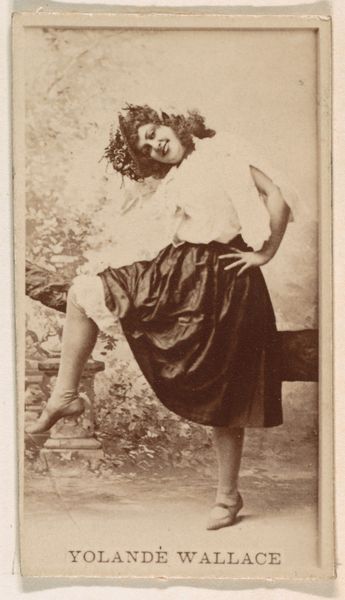
May Grosvernor, from the Actors and Actresses series (N45, Type 1) for Virginia Brights Cigarettes 1885 - 1891
0:00
0:00
drawing, print, photography, collotype
#
portrait
#
drawing
# print
#
photography
#
collotype
#
coloured pencil
#
19th century
#
genre-painting
Dimensions: Sheet: 2 3/4 x 1 3/8 in. (7 x 3.5 cm)
Copyright: Public Domain
Curator: What strikes me immediately is the almost unsettling theatricality of this pose—it's difficult to imagine this kind of portraiture divorced from performative gender constructs and the gaze they’re meant to elicit. Editor: I can appreciate that interpretation. My initial response is drawn to the tonality and balance of light within the piece. It’s all so delicate! We’re looking at “May Grosvernor, from the Actors and Actresses series (N45, Type 1) for Virginia Brights Cigarettes,” a collotype print dating between 1885 and 1891 by Allen & Ginter. Curator: A cigarette card! Immediately, we are plunged into a history of promotional materials and the use of actresses' images to market a product—reinforcing a commercialization of female beauty and fame that continues to this day. Think about who the audience was and what they expected. Editor: Yes, its original context as a mass-produced promotional item influences how we perceive the imagery itself. Looking closer, I notice the sharp contrast between the intricate details of Grosvernor's costume, rendered with surprising precision, and the almost blurry backdrop. The image plane is really compressed with very limited depth of field. Curator: Indeed, and the costume itself speaks volumes. The feathered headdress, the abbreviated skirt... it’s all carefully designed to create an exotic, playful persona. Consider the colonial implications as well; these costumes often borrow from, or rather, appropriate, indigenous cultures and distort them for entertainment purposes. How do we read this exoticization today, especially in relation to ideas of Orientalism and appropriation? Editor: That's a potent point. I’m drawn back to the textural quality that comes through in the print itself. There's something tactile in the way the light catches the fabric and embellishments that would be very seductive in the hand. Curator: Precisely. Even within the constraints of a small cigarette card, the designers are leveraging visual codes to create a narrative – however problematic. Seeing this image in a museum collection raises complex questions about labor, marketing, and celebrity that stay with you long after you walk away. Editor: It’s always compelling how aesthetic choices reveal embedded power structures and societal ideas. Examining its formalism gives us insight, while understanding its socio-historical moment allows a much more critical dialogue with this work of art.
Comments
No comments
Be the first to comment and join the conversation on the ultimate creative platform.
